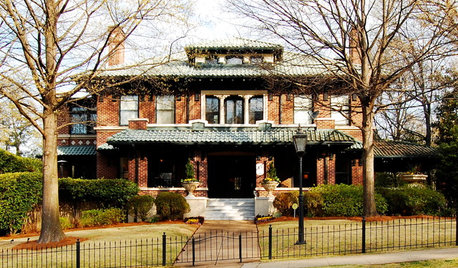yellowing tomato leaves
herbzgirl
18 years ago
Related Stories

EDIBLE GARDENSSummer Crops: How to Grow Tomatoes
Plant tomato seedlings in spring for one of the best tastes of summer, fresh from your backyard
Full Story
FALL GARDENING5 Ways to Put Fall Leaves to Work in Your Garden
Improve your soil and yard the organic way with a valuable garden booster that grows on trees
Full Story
SHOP HOUZZShop Houzz: Brighten Up Your Kitchen With Yellow
Enliven your kitchen with these Houzz finds that are sure to leave you sunny side up
Full Story
COLOR10 Reasons to Make a Splash With Tomato Red
You won’t duck at these tomatoes. See how bold red shades can play up architecture, light up a dark spot and add drama
Full Story
DECORATING GUIDES9 Easy Ways to Decorate With Autumn Leaves
Give your home a burst of color that can be used Halloween through Thanksgiving
Full Story
GARDENING GUIDESWhat's Wrong With My Plant? Leaves Often Hold the Clues
Learn how to identify common plant ailments by reading their leaves
Full Story
DECLUTTERINGDownsizing Help: Choosing What Furniture to Leave Behind
What to take, what to buy, how to make your favorite furniture fit ... get some answers from a homeowner who scaled way down
Full Story
REMODELING GUIDESInterior Brick: Paint it or Leave It?
Here's how to know if covering that brick is a sin or solution
Full Story
LAUNDRY ROOMSRoom of the Day: The Laundry Room No One Wants to Leave
The Hardworking Home: Ocean views, vaulted ceilings and extensive counter and storage space make this hub a joy to work in
Full Story
ARCHITECTUREStates of Style: Alabama’s Icons Leave Their Mark
In the first of a new series, discover the natural beauty, the architectural icons and some of our favorite homes deep in the heart of Dixie
Full StoryMore Discussions






Okiedawn OK Zone 7
garygnu2010
Related Professionals
Londonderry Landscape Architects & Landscape Designers · West Milford Landscape Architects & Landscape Designers · Arnold Landscape Architects & Landscape Designers · Baltimore Landscape Architects & Landscape Designers · South Elgin Landscape Architects & Landscape Designers · Winder Landscape Architects & Landscape Designers · Mooresville Landscape Contractors · Lancaster Landscape Contractors · Lees Summit Landscape Contractors · Lewisville Landscape Contractors · Mercedes Landscape Contractors · San Rafael Landscape Contractors · West Coon Rapids Landscape Contractors · Chandler Decks, Patios & Outdoor Enclosures · Dayton Decks, Patios & Outdoor Enclosures